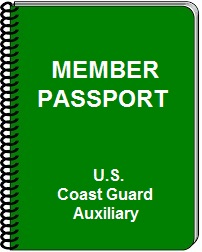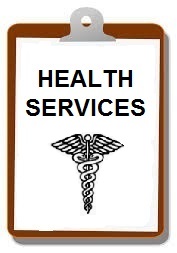New to the Auxiliary?
Congratulations
on your decision to join the USCG Auxiliary and embody the volunteer spirit of
the United States. For many new members, being a member of
the Auxiliary satisfies that innate desire to be part of “something bigger than
yourself”. For that, Team Coast Guard is
grateful you decided that WE were an organization worthy of your desire to help promote the Recreational Boating Safety message in your local community.
YOU COMPLETED YOUR ENROLLMENT PAPERWORK, WHAT’S NEXT?
At this point, you have made a commitment to be part of a local flotilla. Hopefully, your flotilla has assigned a mentor to guide you for your first few months. A mentor is a member who has like interests with the Auxiliary and is someone with whom you can identify as a partner who wants to see you succeed.
The first few months in the Auxiliary can seem daunting with the unfamiliar whirlwind of nautical language, positions, insignia, and acronyms. REMEMBER….all members of the Auxiliary, from the National Commodore to your own flotilla mates started out just like you!!!
Your Enrollment Package has been submitted to the responsible Director of the Auxiliary (DIRAUX) for your area. The DIRAUX will screen your enrollment and submit your information to a background check. This background check is equivalent to the NCIC III process that many law enforcement agencies use. Typically, these background checks take less than 30 days to complete.
Once your local DIRAUX gets a favorable report, they will assign you a seven-digit Auxiliary Member ID Number and you will be assigned the status of “Application Pending” (AP). Your flotilla will be tracking to see when your member ID number has been issued; once that occurs, you can begin training.
Your new Member ID number also enables you to get a password for the Auxiliary's national website. That password opens doors. While some of the national website is open to the public, most of it is secured in the Member Zone. Click on the key icon to get your new password!
There's a handy little document called Member Passport that is available for download and use. This will help you get oriented in your new flotilla. Alongside is a link that demystifies our many abbreviations, acronyms and terms. Click on an icon below to view.
TRAINING
In the first few months of membership, your primary responsibility and goal is to complete the required training that was discussed during your enrollment process. We encourage you to get this training completed within the first 90 days. Doing so will allow you to proceed with training in programs that most attracted you to the organization. You cannot move out of “AP” Status until you have completed the training outlined below.
Safe Boating Course - If you have not had a Safe Boating Course (Auxiliary, state, local, or commercial) prior to joining the Auxiliary, we will provide one for you. It only lasts one day. Work with your mentor and flotilla leaders to get yourself scheduled for this baseline training.
Core Training – Just like the active and reserve members of the Coast Guard, Auxiliary Volunteers are also required to complete Core Training. Core Training is made up of six online and open-book tests. They include Workforce Resilience Training, Security Fundamentals, Protecting Personal Information, Sexual Harassment Prevention, Civil Rights Awareness and Ethics/Personal Gifts. Your mentor can help you navigate our various online training classrooms and will help take the mystique out of the “online test environment”. Click on the icon below to learn more about Core Training.
Basic Qualification Course II (BCQ II)– Every member who joined the USCG Auxiliary after February 1, 2018 is required to complete the seven modules of the BCQ II. The BCQ II is designed to arm you with tools that makes you better aware of the Auxiliary, our role within Team Coast Guard, our missions & programs. It also prepares you for positions of greater responsibility should you desire to move into leadership and management roles. Click on the icon below to learn more about BQC II.
Leadership Training – The USCG Auxiliary needs leaders at all levels. There is an extensive set of courses on leadership and management ranging from Level 1 (member level) to member 5 (district and national leadership). Click on the leadership icon below to learn more.
Uniforms – As members of the Auxiliary, we have the privilege of wearing USCG uniforms with distinctive Auxiliary insignia. When we are in public, those we help do not distinguish between active duty, reserve or volunteers. It is our responsibility to understand all the components of the USCG Auxiliary. Your mentor and flotilla leaders will help ensure you understand what uniforms you will need and how to properly wear the uniform. Click on the Uniform Guide icon below for the latest update on what uniforms we wear, and how to wear them properly.
ID Cards- Once you have completed a Safe Boating Course, Core Training and the BQC II, your flotilla will request a status change to Basically Qualified (BQ). At that point, you will be entitled to request a USCG Auxiliary ID Card. Your flotilla leaders can assist you with your ID Card Application Process.
Introduction to Risk Management - A lot of Auxiliary qualifications and offices require completion of a course called Introduction to Risk Management. The good news is that one can finish this online in a few hours in the Auxiliary's Online Classroom. Click on the icon below to access Aux Classroom, and to learn more about this course.
Auxiliary Missions - The Coast Guard Auxiliary performs a wide array of missions ranging from Recreational Boating Safety (vessel examiner, marine dealer visitor) to Response (boat crew, coxswain, air crew, pilot, radio watchstander) to Prevention (Aids to Navigation Verifier, Marine Safety specialist) to Mission Support (Food Service specialist, Chaplain, Coast Guard Recruiter) just to name some. Click on any icon below to learn more.
Recreational Boating Safety
Response & Prevention
Coast Guard Support
Mission Support
Advanced Training - Later on, you may wish to pursue advanced operational training. The AUXOP, or "Operational Auxiliarist" Program is an advanced training program available to members of the Coast Guard Auxiliary who wish to increase their practical relevance to Coast Guard missions, and better assist the Coast Guard to fulfill needed skill sets. Those who complete this training proudly wear the prestigious AUXOP device on their uniforms. Click on the icon below to learn more about AUXOP.
Thank you for making the USCG Auxiliary your volunteer organization of choice. Take advantage of all of the tools made available to you, and rely on your mentor to help you along the way.























